Great user experiences don't happen by accident. They need a clear strategy that connects what users want with what businesses need.
UX strategy brings together user research, business goals, and smart design choices to create products that work well and matter to people.
This guide shows you what a UX strategy looks like today. You'll learn key insights shaping the field and get practical tips to build more thoughtful user experiences.
What Is UX Strategy?
UX strategy involves:
- Understanding why users behave in specific ways.
- Researching into what goals they try to achieve and what needs they have through user interviews.
- Developing interactive prototypes that can later be tested for usability.
- By developing an experience strategy, businesses can create unique experiences that align with both user and business needs, keeping customers returning.
Key UX Strategy Elements by Clay
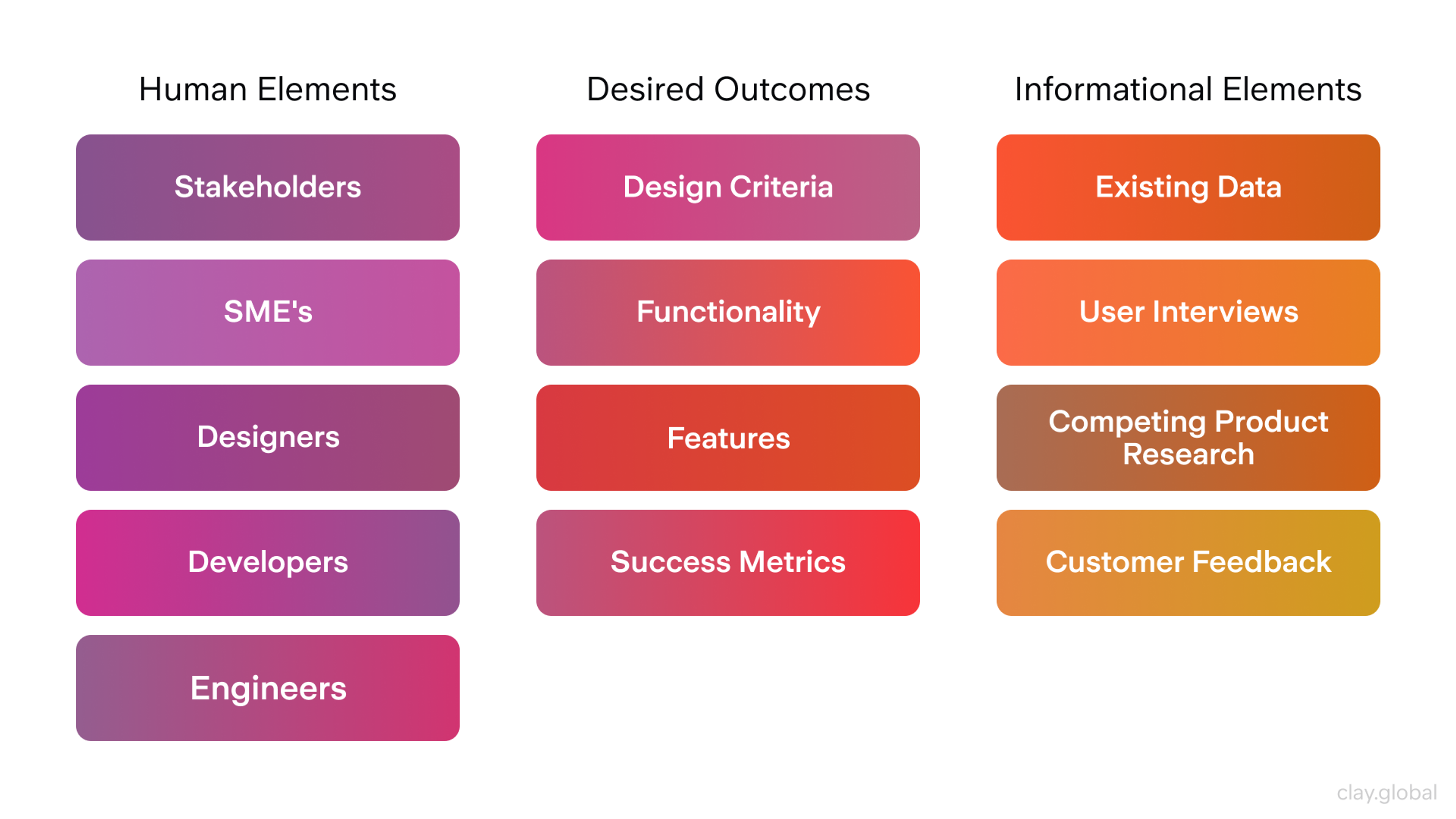
At its core, user experience strategy revolves around the idea that you need to understand your users’ wants and needs so you can effectively build products or services around them. It’s not just about making something look good.
It’s about ensuring it meets all customer expectations regarding functionality and ease of use. Creating your own UX strategy involves collaboration across departments, aligning design efforts with business goals, and breaking down the vision into actionable goals.
The UX team plays a pivotal role and drives experience strategy by implementing and iterating on the product development process.
To do this, you must know your target audience (which includes their age range, gender profile, and interests) and then use this data accordingly while making design decisions.
This means researching what kind of designs work best for specific demographics and testing out different ideas with real users during the design before launching anything publicly.
UX Research vs UX Strategy vs UX Design by Clay

A successful UX strategy should be holistic by nature. It should take into account all aspects of the product or service, including aesthetics (visual design), accessibility (making sure everyone can use it), usability (making sure it’s easy to use), as well as taking into consideration of what customers will think when using the service overall. This broader approach shapes experience strategy across touchpoints and teams.
Creating user personas helps to keep everyone on the same page, ensuring that the product satisfies both user requirements and company objectives.
Focusing on these elements ensures a perfect blend between form and function, resulting in satisfied users who convert more easily.
Why UX Design Strategy Is Important?
UX design strategy aligns user needs with business goals, ensuring that every design decision supports a larger vision. It helps teams prioritize features, streamline the user journey, and deliver products that are not only usable but meaningful.
With a good UX strategy, design becomes proactive — guided by insight, not just aesthetics — leading to better experiences and long-term success. Ultimately, it develops experience strategy that’s consistent, scalable, and impactful.
A focus on user retention is essential for ensuring ongoing engagement and success.
Benefits Of Developing a UX Strategy
Developing experience strategy is essential for businesses to ensure their products meet user needs. A strong strategy creates engaging experiences that drive conversions, retain customers, and stay ahead of competitors.
It defines experience strategy through research, prototyping, and alignment between design and business goals. It guides design efforts, aligns teams, and ensures designs address user needs effectively. User centricity prioritizes simplicity and consistency in design to enhance user experience.
A successful UX strategy starts with understanding user goals and motivations. This means researching audiences and testing ideas with real users early on. Gathering this data helps avoid costly mistakes and ensures the final product meets expectations. A strong UX strategy also fosters brand loyalty by creating positive experiences that encourage repeat business.
A solid UX strategy also boosts customer loyalty. Positive experiences encourage repeat business and word-of-mouth recommendations, driving sales. It builds trust, as users value products designed with their needs in mind. Lastly, a clear UX strategy saves time and money.
By prioritizing research, testing, and iterative design upfront, businesses can avoid expensive redesigns — especially helpful for smaller companies with tight budgets.
Why UX Strategy Is Important by Clay
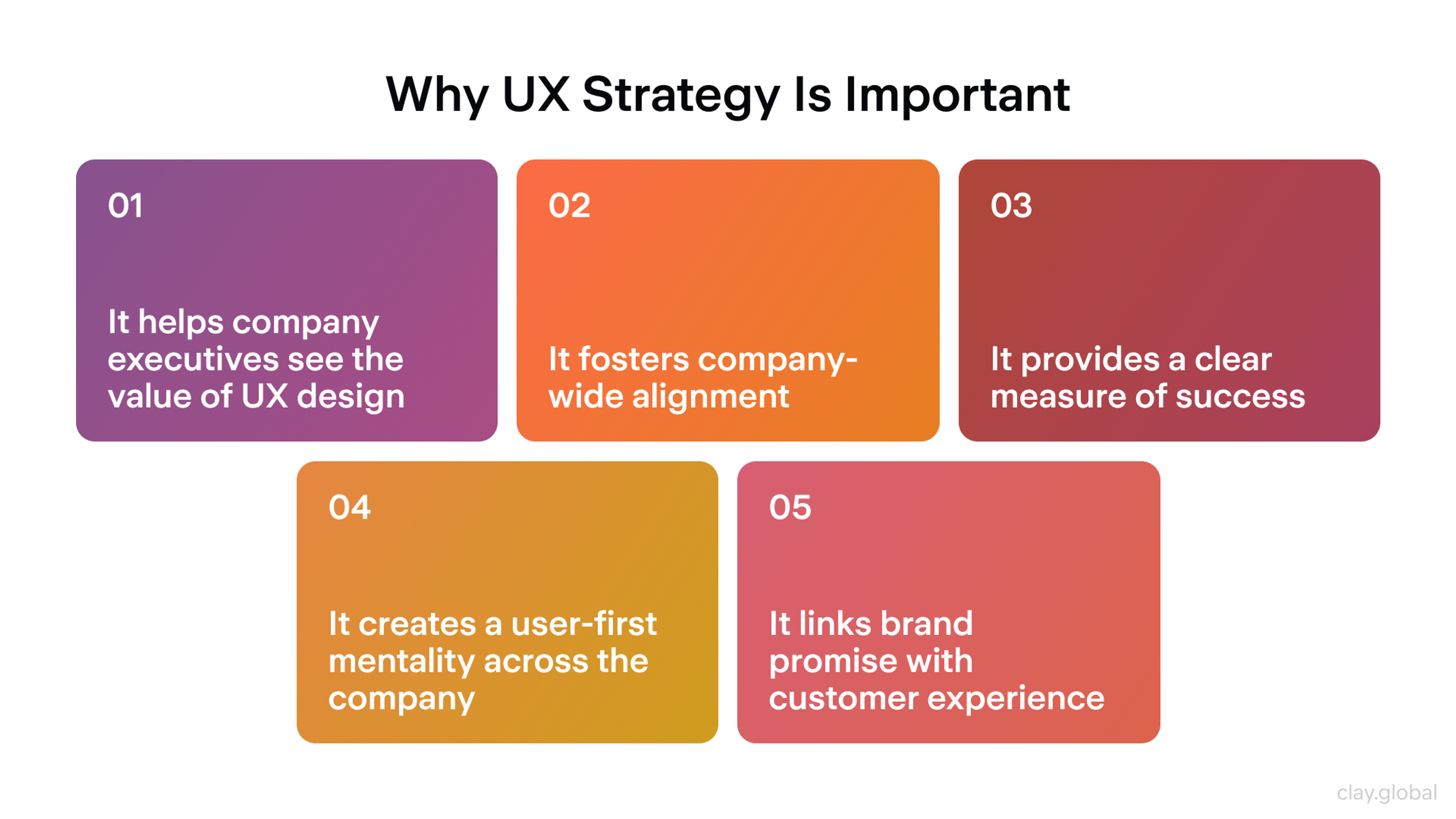
Developing UX Design Strategies and Tactics
Four Tenets of UX Strategy
Jaime Levy’s 2015 publication “UX Strategy: How to Devise Innovative Digital Products That People Want” illustrates four key elements of UX strategy that must be combined for a plan to be successful. Highlighting various ux strategy examples from well-known global brands can further illustrate these elements in practice.
1.
Establish a Business Strategy. All innovative digital solutions and products need a business model that has its own set of principles, competitive advantage, revenue streams, and objectives.2.
Value innovation is the Key. Companies must strive for value creation in terms of differentiation (for customers) and lowering costs simultaneously if they want success.3.
User research verifications. Before starting a design, ask your target users directly whether the design meets their demands. Positive feedback will help save designers and companies valuable time, money, and effort in developing an unappealing product.4.
Optimal user experience design. When all the other aspects have been addressed successfully, it’s essential to craft a superior user experience centered around the product’s key features - fluidly delivering value for customers’ utmost satisfaction.
UX Strategy Components by Clay
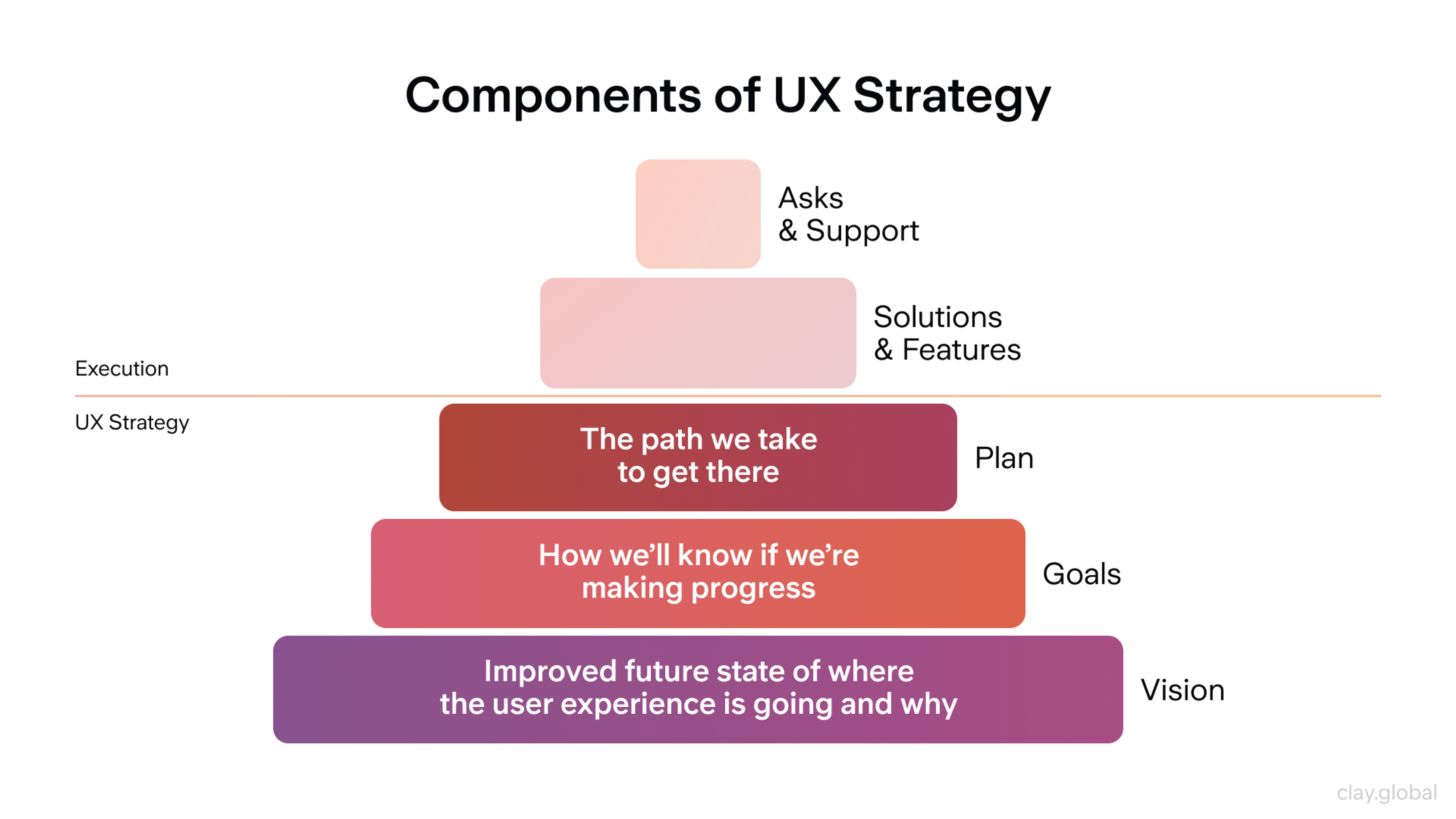
Structuring the Core Message for Your Target Audience
When crafting a core message, a clear UX strategy is essential. Keep your message concise and simple so users quickly understand your product or service. Understanding business stakeholders is essential for effectively balancing user needs with business interests.
Focus on benefits instead of just listing features. Highlight the value customers will gain to grab the attention of end users and keep them engaged. Showcase what makes you stand out from competitors.
Ensure your brand values feel authentic. Your tone should reflect your company’s mission and principles to build trust with users.
Conduct user research through surveys, interviews, or usability tests to understand their needs. Use this data to shape a message that truly resonates.
Designing Experience Through CX Design Principles
A successful UX strategy includes designing future end-user experiences through CX design principles. Customer experience (CX) designs contain user interface (UI), user experience (UX), and customer service principles which allow businesses to craft an easy journey for customers.
Aligning the design with the company's guiding principles ensures a cohesive approach to achieving business objectives.
UI focuses on visually pleasing design while still having easy navigation access for users. UX focuses on understanding user’s emotions, motivations, and goals to meet their needs based on personality traits. Lastly, customer service ensures all inquiries are met quickly, leading to satisfied customers who will return repeatedly.
Many key components come together to create a cohesive journey, so keep that in mind when crafting user experiences, such as button colors or font sizes compared to checkout page layouts or onboarding processes. Even UI interaction with other product aspects should be thought about to ensure a unified brand image across branding channels.
CX vs UX Diagram by Clay

Professionals recommend incorporating AI into your UX strategy to provide personalized experiences for customers. It will help reduce friction in the customer journey while providing valuable insights into user habits and behaviors.
Creating Interactive Prototypes and Testing Usability
Creating interactive prototypes and testing their usability is crucial to any UX strategy. Building interactive prototypes helps businesses see how users interact with their product or service and make the necessary adjustments before the final version. Validated user research helps ensure that the prototypes meet user needs before the final version is developed. Usability tests allow companies to find out whether there are any potential problems with the user experience that need resolving.
Interactive prototypes are virtual models of a finished product that let you experiment with different designs and evaluate the user experience. If you were building each test from scratch, it would be both time-consuming and expensive — instead, these models save you both time and money in the long run. They also provide an opportunity for early feedback from users on what changes they might like to see.
Benefits of Prototyping by Clay
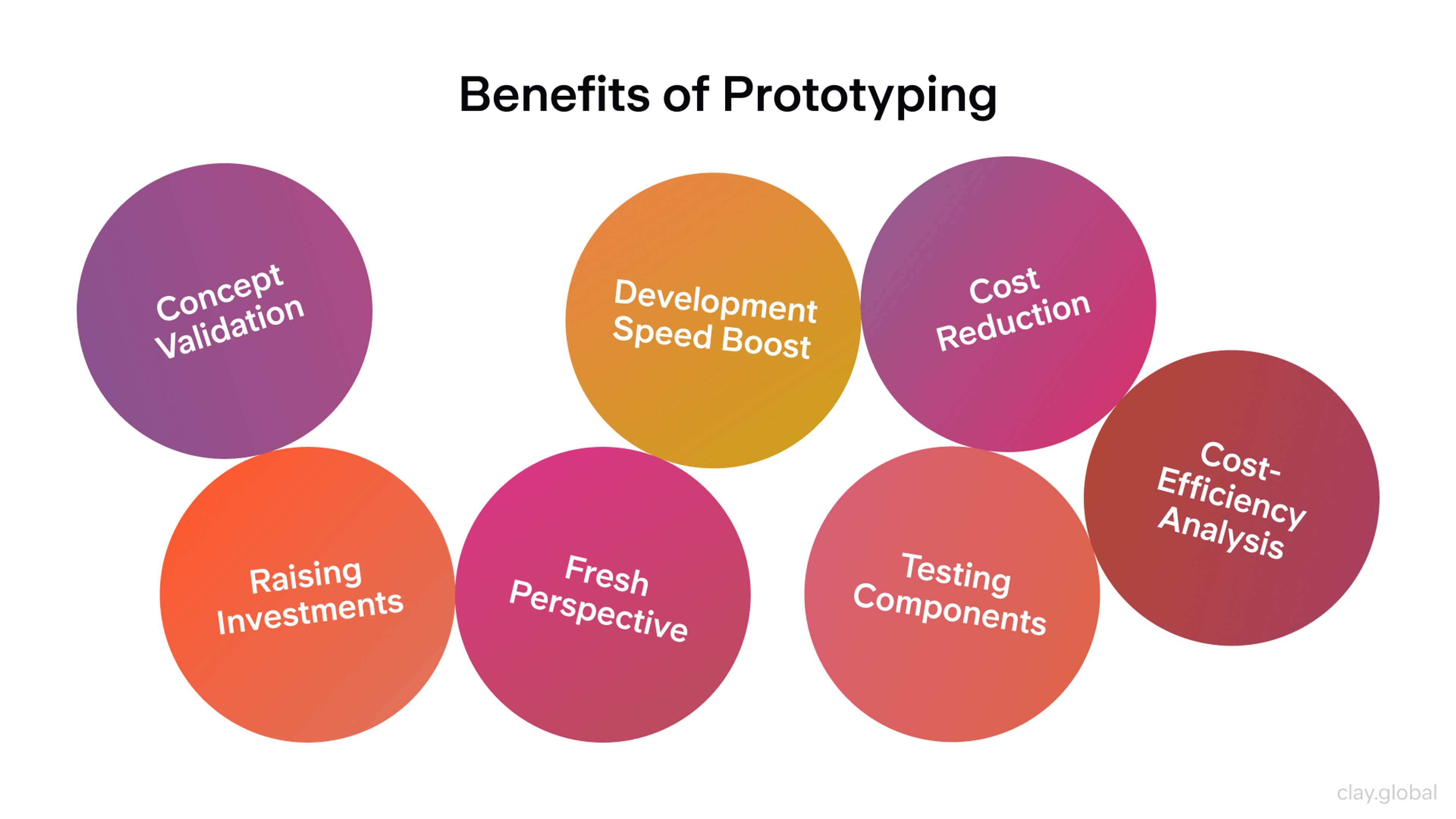
Usability testing is another technique for evaluating user experience; it involves assessing how easy it is for people to complete tasks within your system or interface.
A UX designer must balance user needs with business goals by engaging stakeholders early and developing structured approaches to validate design decisions. Anything from menu navigation to checkout processes could present a problem if not implemented correctly, so this testing can be invaluable.
Focusing on your aim and objective is a surefire way to build momentum toward achieving a successful UX vision. For example, analyzing what could be done better regarding the sign-up process. As an executive, devising strategic objectives can enable you to set more specific goals to breed desired outcomes.
Our redesign of the Discover mobile app demonstrates the importance of interactive prototyping and usability testing. By refining the app login process and improving feature discovery, we created virtual models to test different design approaches.
This iterative process allowed us to get early user feedback, identify potential problems, and optimize the user experience. A comprehensive design system, including custom-designed icons and illustrations, ensured a cohesive brand presence across all platforms.
Ultimately, these efforts saved time and resources and resulted in a user-friendly app that effectively met customer needs.
Discover Mobile App by Clay
Steps for UX Strategy
Research and Analysis in Business Strategy
Before moving forward, it’s important to understand where you are currently. To build an effective UX strategy, you need to know how your product is doing now with user experience.
User research and competitive analysis alongside stakeholder interviews can identify what’s working well, what could improve, and potential opportunities. Tools like Google Analytics can provide valuable insights into user behavior and preferences.
UX Research Process by Clay

Competitive analysis gives you a good idea of who else is out there, what they’re doing that may contribute to their successes or failures, and how they compare in strengths and weaknesses.
This helps narrow down how you will set your product apart in the market while continuing to deliver an even superior user experience through a well-defined strategic plan.
UX Vision
Building a UX vision can be simple! Ask yourself these questions:
- What feeling do users get when using your product?
- How does it make accomplishing tasks easier / faster / more enjoyable for them?
- How does this benefit your company’s objectives and bottom line?
- What could this have over other products on the market today?
Unifying team members under one UX vision allows everyone to work towards common goals. This creates an effective strategy that aligns with overall organization goals so that critical outcomes can be defined as long-term ambitions for success.
A UX strategist serves as a bridge between the user and the business, facilitating the creation of user-centered products that align with company strategies.
3 Steps to Create UX Vision by Clay

Focus & Business Objective
Translating a UX vision into real-life focus areas and strategic goals helps prioritize work that needs to be done. Establishing key results helps prioritize work that needs to be done to achieve strategic goals. Doing so builds a step-by-step process between the objective and the outcome.
Focus area narrowing determines the direction for reaching successful UX visions. For instance, what can be improved upon when signing up? Establishing strategic objectives then lets even more specific goals come together over time, highlighting why a UX strategy is important for long-term success.
UX Roadmap
A UX roadmap is a powerful tool for achieving any goal you have set. It can unite everyone involved in the project, prioritize activities that will provide maximum business value, and track progress toward your UX vision as a leader.
Conducting research is essential for identifying the primary components needed to address user needs and business goals.
Moreover, this strategy offers practical steps so that every final element of your plan can come to life accurately and efficiently. Use roadmaps to ensure success while organizing all aspects at once.
Measuring Success and Refining Your User Experience Strategy
Setting Metrics to Evaluate Performance
Measuring success and refining the UX strategy is integral to any successful and solid UX strategy. Setting metrics to evaluate performance can help businesses understand how their product or service performs with customers, identify potential issues, and make improvements as needed.
Metrics can also measure progress over time to ensure an optimized user experience. Metrics can also measure the effectiveness of each customer touchpoint, providing valuable insights into user interactions.
Key UX Metrics by Clay

When setting metrics for evaluating performance, businesses should focus on measuring key performance indicators (KPIs) such as customer satisfaction, website engagement, and conversion rate. Engaging company leaders early in the process helps guide UX designers in understanding the broader business context and user needs.
Customer satisfaction metrics measure a user’s satisfaction with the overall experience — which can provide valuable insight into how well a product or service meets customer needs and preferences.
Website engagement metrics track how often users interact with a website or app — including session length and click-through rates — which provide insight into whether users find what they need quickly and easily.
Conversion rate measures how many customers complete a desired action, like making a purchase or signing up, showing if users are engaging with what the business offers.
Businesses should also track specific behaviors, such as page load time or checkout abandonment, to better understand the customer journey.
These insights can help identify issues that prevent customers from completing tasks or interacting with websites, allowing for necessary adjustments.
Regularly tracking these metrics helps businesses see how their digital products are performing and where improvements are needed to enhance the user experience. By refining their UX strategy based on customer needs and feedback, businesses are better positioned for success.
Understanding User Needs and Goals
Gathering Information Through User Research
Conducting user research is crucial when gathering user information for an effective UX strategy. Businesses can learn from insights gained by testing their designs with users before making final decisions.
User research gives designers better understanding of what users need from a product or service. Usability tests and other methods can be used as interviews, surveys, and focus groups to develop questions required to determine your target audience’s wants.
Companies must ask the right questions during this type of research if they want accurate results about their target audience’s needs and objectives. For example, you might ask them about desired features or how they would use them in particular situations.
Additionally companies who test prototypes with users get real-time feedback on how they interact with the product or service. Doing so makes it easier for designers to remember that their designs should be intuitive and engaging.
UX Research Methods Chart by Clay

Establishing User Personas and Goals
Once researchers figure out what users want through research, user personas help them identify who their ‘ideal customers’ are based on data collected from user research. For example, what they may like or dislike about a service or product.
Developing these personas helps set key results that align with user needs and business objectives. It gives the company insight into their motivations, behaviors, goals, frustrations, etc.
Designers can then create a shared understanding of the target audience between different departments within an organization, ensuring everyone is designing with users in mind.
Aside from creating personas, companies must also set specific product or service goals to measure success. Goals need to be measurable and relevant to the company's objectives, both short-term and long-term.
Companies should aim to establish SMART (specific, measurable, achievable, realistic, and timely) goals to avoid unrealistic expectations for themselves or their team.
Additionally, businesses should track key performance indicators (KPIs) to measure progress over time and adjust strategies accordingly if needed, ensuring a cohesive strategic plan.
User Persona Example by Clay

Identifying Pain Points and Opportunities
When planning a UX strategy for 2026, it’s important to address pain points and seize opportunities. Pain points, like slow loading times or confusing navigation, frustrate users. Fixing these improves the experience and boosts engagement. Addressing pain points and seizing opportunities should align with the company's guiding principles.
Opportunities help businesses leverage trends and meet customer needs while achieving goals. This could mean adding features, streamlining processes, or offering more efficient solutions. Staying ahead of trends ensures businesses deliver what users want and stand out, making it the final element of a successful UX strategy.
Using research and analytics, companies can better understand user behavior. These insights help optimize and test designs, creating experiences that keep customers coming back.
4 Types of Customer Pain Points by Clay
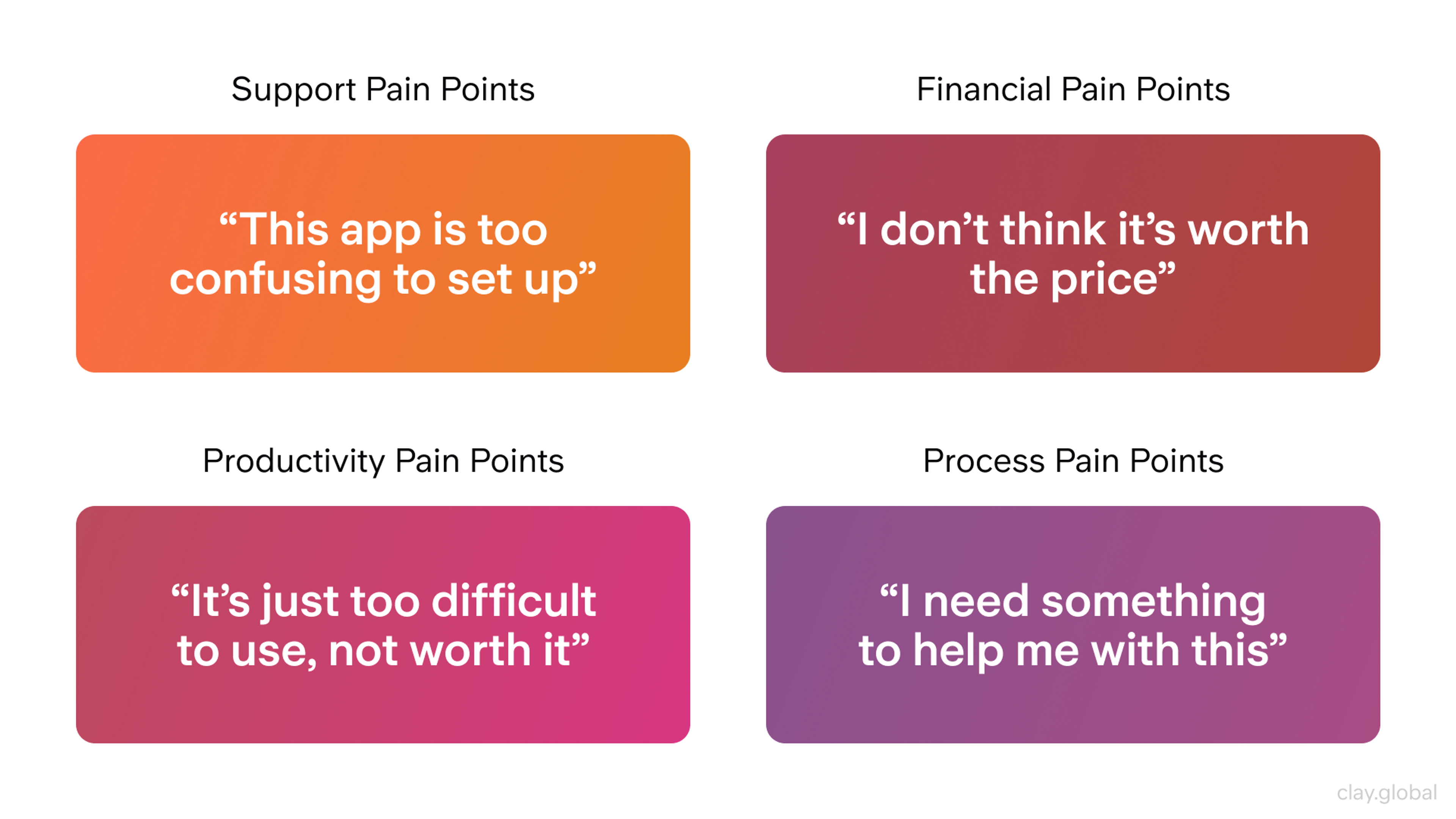
Building an Evergreen UX Strategy
Implementing Automation Processes for Sustained Improvement
Automation processes are essential for a long-term UX and product strategy. Automating development process elements makes it easier to track how users behave over time and create tailored experiences. Automation processes are key components for maintaining and enhancing the UX strategy over time.
It also has other benefits, such as making it easier to apply custom experiences quickly. You can use real-time feedback rather than relying solely on surveys or focus groups.
By making changes based on the data you collect by automating feedback tools, you can ensure that your strategy constantly adapts to your audience’s needs.
Running these automated processes will help you keep an eye on user engagement in the long term. This way, when something isn’t working as well as expected or could be improved — you’ll know immediately. Collecting this data continuously will allow you to enhance your digital product with direct insight into what each specific demographic wants.
Automation allows business owners to refine their strategies based on customer feedback without losing out on any of their attention spans. When someone voices a complaint about your company online or sends an email suggesting a change — they want you to address it then and there. Using automated tools will allow you to do so quickly and efficiently so that nobody else runs into that same issue again.
Adapting To Changing User Needs & Trends
No matter how strong your UX strategy is, it’s essential to adapt as trends change. An outdated approach won’t cut it in today’s fast-paced world.
Stay ahead by using tools like predictive analytics and machine learning. Predictive analytics uses past data to forecast customer behavior and improve UX with personalization. Real-time feedback and machine learning let businesses quickly adjust strategies based on market insights.
UX Strategy and Experience Gap by Clay
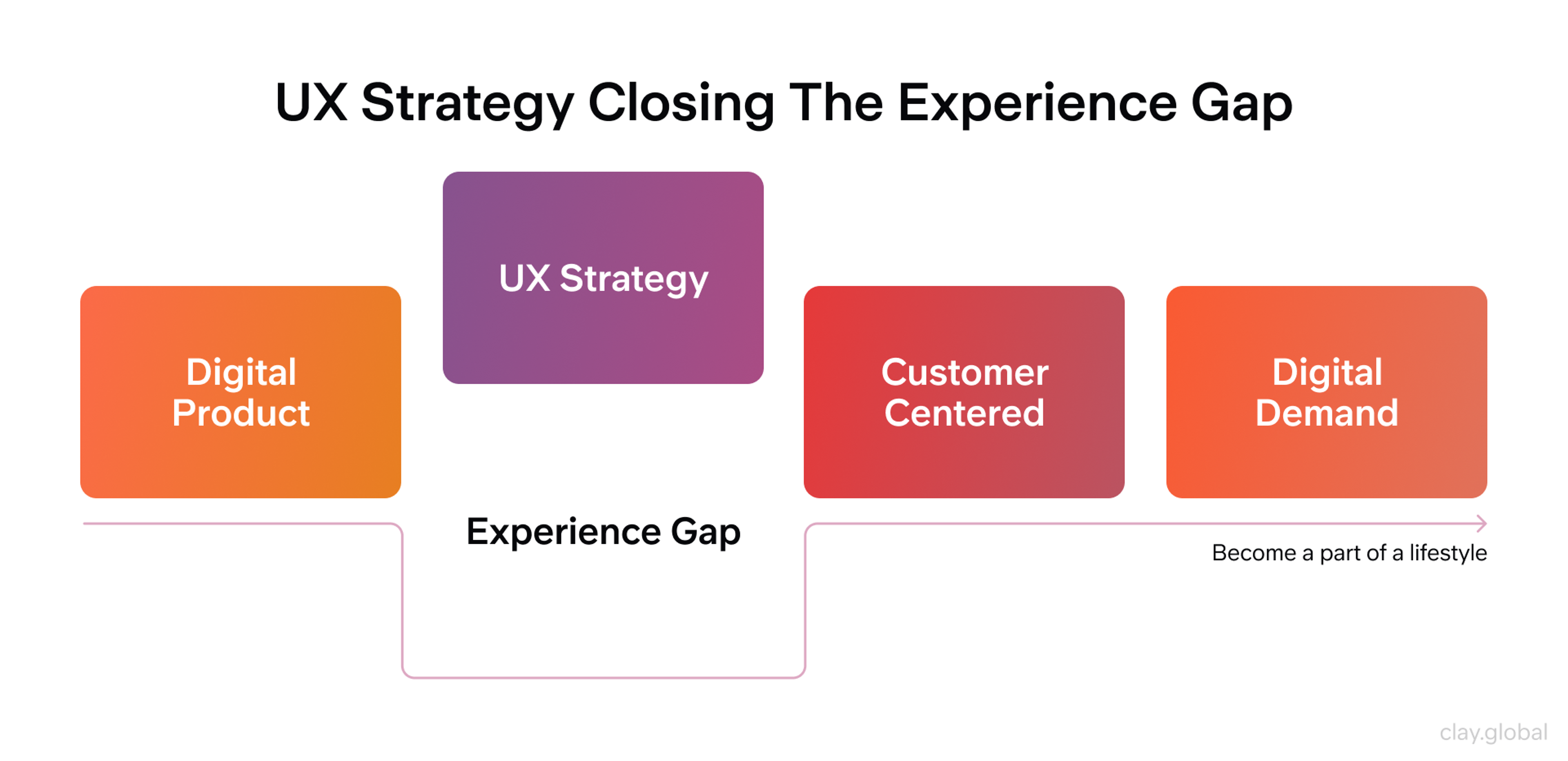
A/B testing methods should also be done throughout the development process of every product or service. Businesses can compare different versions of a page or feature against each other so they’ll know which one works best for particular users.
Other than helping companies detect areas they need to improve, it’s also an effective method to understand how users interact with their products or services — making optimization easier.
Keeping up with user demands helps businesses improve experiences. Using social media or customer support forums, companies can gather feedback to see what works in their UX strategy.
Adapting your UX strategy is key to success. Predictive analytics, A/B testing, and regular customer outreach help create user experiences that stay relevant and boost conversion rates.
Read More
Conclusion
In conclusion, leveraging AI technology is essential to creating a successful UX strategy. By utilizing data science methods like predictive analytics and machine learning algorithms, businesses can anticipate customer behavior and make decisions in real-time based on user feedback.
Additionally, A/B testing processes help identify areas where the user experience may need improvement, while staying connected with customers through outreach initiatives helps to keep businesses informed about changes in the product's user experience preferences.
Ultimately, companies can create evergreen experiences that improve conversion rates over the long run by adapting their UX strategies according to changing trends and user insights.


About Clay
Clay is a UI/UX design & branding agency in San Francisco. We team up with startups and leading brands to create transformative digital experience. Clients: Facebook, Slack, Google, Amazon, Credit Karma, Zenefits, etc.
Learn more

About Clay
Clay is a UI/UX design & branding agency in San Francisco. We team up with startups and leading brands to create transformative digital experience. Clients: Facebook, Slack, Google, Amazon, Credit Karma, Zenefits, etc.
Learn more


